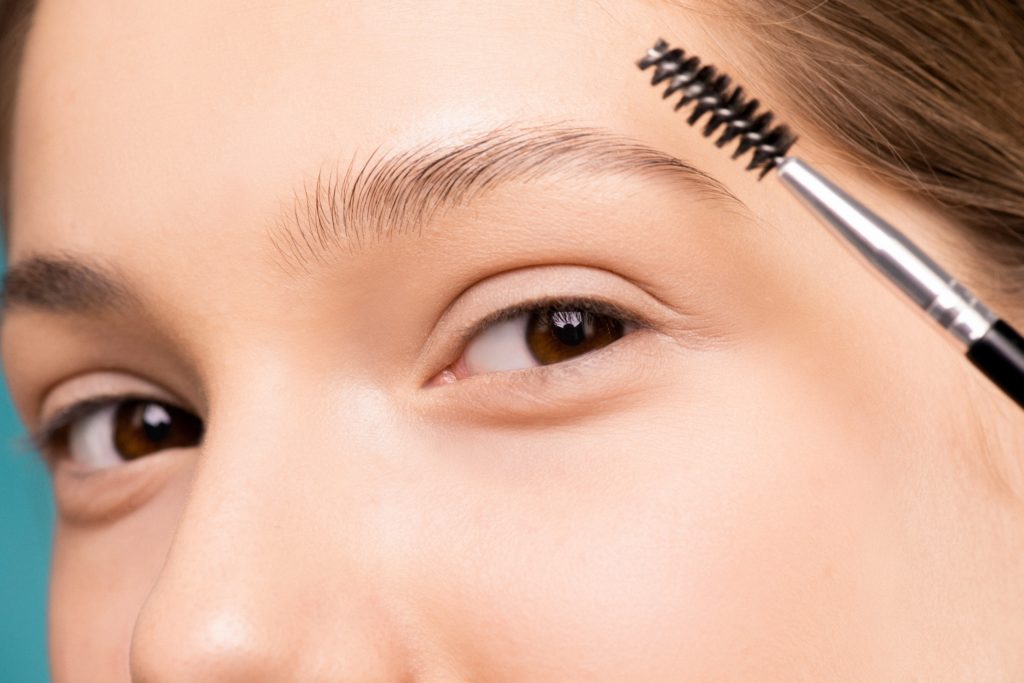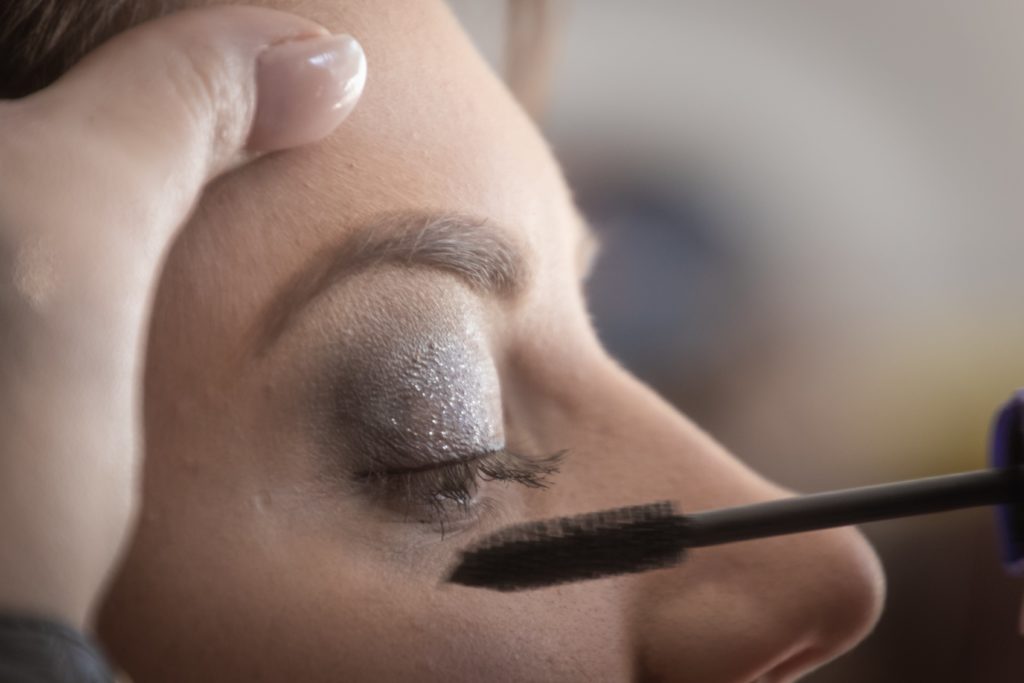Have you ever wondered how some people have perfectly shaped eyebrows that seem to effortlessly complement their facial features? The secret lies in understanding the art of brow shaping for your face shape.
In this comprehensive guide, we’ll take you on a journey through the intricate process of eyebrow shaping, helping you unlock the key to enhancing your natural beauty.
I. Understanding Face Shapes
Different Face Shapes
- Oval Face Shape: Oval faces are considered the most balanced. They have gently rounded foreheads and chins with slightly wider cheekbones. The goal for oval faces is to maintain their natural balance, so the ideal eyebrow shape is soft and gently arched.
- Round Face Shape: Round faces have softer angles with similar width and length. To add definition and create the illusion of length, round faces benefit from higher arches in their eyebrows.
- Heart Face Shape: Heart-shaped faces have wider foreheads and narrower, pointier chins. The aim of heart-shaped faces is to soften the forehead and balance the features. This can be achieved with gently arched eyebrows.
- Square Face Shape: Square faces have strong jawlines and straight cheekbones. The ideal eyebrow shape for square faces should soften the angles and create a more rounded appearance.
- Rectangle Face Shape: Rectangle faces are similar to square faces but with greater length than width. To make the face appear shorter, eyebrows should be straighter with minimal arch.
- Diamond Face Shape: Diamond faces have narrow foreheads and chins with wider cheekbones. The goal of diamond faces is to soften the cheekbones and add balance. Slightly curved, arched eyebrows work well.
- Triangle Face Shape: Triangle faces have wider jaws and narrower foreheads. To balance the features, eyebrows should have a gentle arch and create the illusion of a wider forehead.
- Long Face Shape: Long faces have greater length than width and require eyebrows with a flatter shape to make the face appear shorter.
- Pear Face Shape: Pear-shaped faces have wider jaws and narrower foreheads. The aim of pear faces is to balance the proportions, which can be achieved with softly curved eyebrows.
- Oblong Face Shape: Oblong faces are similar to long faces but may have more angular features. The goal is to reduce the appearance of length with softly arched eyebrows.
Identifying Your Face Shape
Identifying your face shape can be done by measuring the key aspects of your face. Here’s how to do it:
- Forehead Width: Measure the width of your forehead from one side of your hairline to the other.
- Cheekbone Width: Measure the width of your cheekbones, starting from the outer edge of one cheekbone to the other.
- Jawline Width: Measure the width of your jawline, from one edge of the jawbone to the other.
- Face Length: Measure the length of your face, from the center of your hairline to the tip of your chin.
After taking these measurements, compare them to determine your face shape. Remember that while these guidelines provide a general idea, every face is unique. The aim is to use your face shape as a reference for creating eyebrows that enhance your individual beauty.
The Impact of Face Shape on Eyebrow Design
Your face shape plays a pivotal role in determining the ideal eyebrow design for you. The right eyebrow shape can enhance your features, while the wrong one can throw off the balance of your face. Understanding your face shape is the first step in achieving the perfect eyebrows that frame your face harmoniously.
II. Basic Tools and Products
Essential Tools for Eyebrow Shaping
- Tweezers: Tweezers are your primary tool for hair removal. Choose a pair with a slanted tip for precise and easy plucking.
- Spoolie Brush: A spoolie brush is essential for grooming and blending your eyebrows. It helps distribute products and ensures a polished look.
- Brow Scissors: Brow scissors are handy for trimming excess length. Use them sparingly to maintain your eyebrow shape.
Common Eyebrow Products
Eyebrow products come in various forms, and choosing the right ones can make a significant difference in achieving a natural look. Here are some common eyebrow products:
- Eyebrow Pencils: These pencils are versatile and easy to use. They come in various shades to match your hair color. You can use them to fill in sparse areas and define your brows. Always choose a pencil that is one or two shades lighter than your natural brow color for a more natural look.
- Eyebrow Powders: Eyebrow powders are great for a soft, subtle look. They are applied with an angled brush and can be used to fill in and shape your brows. Like pencils, choose a shade that matches your hair color.
- Eyebrow Gels: Eyebrow gels come in clear or tinted versions. Clear gel is used to set your brow shape, while tinted gels add color and hold. Tinted gels are especially useful for unruly brows.
- Eyebrow Pomades: Pomades are creamy products that provide intense color and hold. They are perfect for achieving a bold, dramatic look but require a steady hand and practice.
- Eyebrow Stencils: Stencils are templates that help you create a defined eyebrow shape. They can be helpful for beginners, but the key is to find a stencil that matches your desired shape.
- Eyebrow Highlighters: Highlighters are used to accentuate the arch of your brows and make them pop. They come in pencil or cream form.
Choosing the Right Shades and Textures
Selecting the right shades and textures for your eyebrow products is essential to achieving a natural and flattering look. Here are some tips:
- Shade Matching: When choosing a shade for your eyebrow products, aim for a color that matches your natural hair color. If you have dyed hair, match the products to your hair color for a cohesive look.
- Texture: The texture of the product depends on the look you want to achieve. Pencils and powders create softer, more natural brows, while pomades and gels are ideal for bold and defined brows.
- Longevity: Consider the longevity of the product. If you need your eyebrows to stay put all day, opt for long-wearing formulas. Clear brow gels, in particular, can lock your shape in place.
- Skin Tone: Your skin tone can also influence the choice of shade. If you have cool-toned skin, choose products with ashy or cool undertones. For warm-toned skin, opt for products with warm undertones.
III. Eyebrow Shaping Techniques
1. Creating a Natural Arch
The arch of your eyebrows is a critical element that can open up your eyes and add dimension to your face. Here’s how to create a natural arch:
- Find Your Starting Point: Use a straight object, like a pencil, to align with the outer edge of your nostril and the inner corner of your eye. Where the object meets your brow is where your brow should start.
- Locate the Arch: The highest point of your arch should align with the outer edge of your iris (the colored part of your eye). Mark this point with a small dot.
- Determine the End Point: To find where your eyebrow should end, extend your pencil from the outer edge of your nostril to the outer corner of your eye. Mark this point.
- Connect the Dots: Use a brow pencil to connect the dots you marked. Create a gentle curve, starting at the beginning of your brow and reaching the peak at the arch point. Then, continue to the endpoint.
- Outline Your Brow: Using short, light strokes, outline your brow shape. This will serve as a guide for tweezing or filling in your eyebrows.
- Tweezing: To achieve your desired shape, tweeze the stray hairs that fall outside the outlined shape. Follow the natural growth pattern of your hair. Be careful not to over-pluck.
- Fill In Your Brows: Fill in your brows using a brow pencil, powder, or other preferred products. Follow the outline you created, and use short, feathery strokes for a natural look.
- Blend and Set: Use a spoolie brush to blend the product and ensure there are no harsh lines. Finish by setting your brows with a clear or tinted brow gel.
Tips for Achieving Symmetry
Symmetry is the key to beautiful eyebrows. Here are some tips to ensure your brows look like sisters, not distant relatives:
- Measure and Mark: To achieve symmetry, always measure and mark your starting point, arch, and endpoint on both brows. Use a mirror to check that your marks align properly.
- Step Back and Evaluate: After each step of shaping or filling in, step back from the mirror and evaluate your progress. This helps you maintain a balanced look.
- Use Guidelines: You can use a straight object as a guideline to make sure your brows have a similar arch and endpoint on both sides. Hold the object vertically against your nose and follow the outer corner of your eye to shape the perfect arch.
- Practice and Patience: Achieving perfect symmetry may take practice and patience. Don’t be discouraged if your brows aren’t identical – very few people have perfectly symmetrical features.
Common Mistakes to Avoid
There are common pitfalls to be aware of when shaping your eyebrows. Here’s how to avoid them:
- Over-Plucking: One of the most common mistakes is over-plucking. Avoid the temptation to create overly thin brows, as they can make you look older.
- Ignoring Your Natural Shape: Work with your natural brow shape. Attempting to change your brow shape too dramatically can lead to an unnatural look.
- Matching Someone Else’s Brows: What works for one person may not work for you. Your face shape and features are unique, so create a shape that suits you.
- Using the Wrong Shade: Using a brow product that’s too dark can result in harsh, unnatural-looking eyebrows. Always match the product shade to your natural hair color.
- Not Blending: Harsh lines or blocky brows are often the result of not blending properly. Use a spoolie brush to soften and blend your product.
- Neglecting Maintenance: Eyebrow shaping is not a one-time effort. Regular maintenance is necessary to keep your brows looking their best.
IV. Eyebrow Shaping for Different Face Shapes
Eyebrow Shaping for Oval Faces
Oval faces are considered the most balanced, making them versatile when it comes to eyebrow shape. Here’s what you should consider for oval faces:
- Soft and Gently Arched Brows: Oval faces are naturally balanced, so you don’t need to make any drastic changes. A soft, gently arched brow complements the symmetry of your face.
- Natural Thickness: Oval faces can maintain the natural thickness of their brows. Avoid over-thinning, as it can make your face appear elongated.
- Slight Arch: To add a touch of elegance, aim for a slight arch. The highest point of the arch should align with the outer edge of your iris.
- Use Your Natural Shape: Work with the natural shape of your eyebrows to achieve a soft, balanced look.
Eyebrow Shaping for Round Faces
Round faces benefit from higher arches in their eyebrows to add definition and create the illusion of length. Here are some guidelines:
- Higher Arches: Create an arch that’s higher than the natural shape of your brow. This lifts the eyes and adds angularity to your features.
- Lengthening the Tail: Extend the tail of your eyebrows slightly beyond the outer corner of your eye to create the illusion of a longer face.
- Slimming Effect: Higher arches can give the face a slimming effect, balancing the roundness.
Eyebrow Shaping for Heart-Shaped Faces
Heart-shaped faces have wider foreheads and narrower, pointier chins. The goal is to soften the forehead and balance the features. Here’s what to consider:
- Gently Arched Brows: Softly arched brows work well to create balance and soften the forehead.
- Natural Thickness: Like oval faces, you can maintain a natural brow thickness. Avoid overly thin or overly thick brows.
- Avoid Over-Plucking: Be cautious not to over-pluck the tail of your brows, as this can exaggerate the pointy chin.
- Soft Curve: A gentle curve is ideal, avoiding any sharp angles.
Eyebrow Shaping for Square Faces
Square faces have strong jawlines and straight cheekbones. To soften the angles and add elegance to your look, consider these guidelines:
- Softening Angles: The goal is to soften the square features. Slightly arched eyebrows help in this regard.
- Higher Arch: A slightly higher arch can add some softness and femininity to your look.
- Gentle Curve: Create a gentle curve without dramatic angles to avoid enhancing the squareness of your face.
- Fuller Brows: Square faces can benefit from slightly fuller brows to add some softness.
Eyebrow Shaping for Other Face Shapes
If your face shape doesn’t fit into one of these categories, don’t worry. The key is to adapt your eyebrow shaping to your unique features:
- Diamond-Shaped Faces: Diamond faces benefit from slightly curved, arched eyebrows to balance the cheekbones.
- Triangle-Shaped Faces: To create the illusion of a wider forehead, opt for gently arched brows that start thin and gradually become thicker.
- Rectangle-Shaped Faces: For rectangular faces, straighter brows with minimal arch are ideal to make the face appear shorter.
- Long Faces: Long faces require flatter eyebrow shapes to reduce the appearance of length.
- Pear-Shaped Faces: To balance the proportions of pear-shaped faces, softly curved eyebrows work well.
- Oblong Faces: Similar to long faces, oblong faces benefit from flatter brow shapes to minimize length.
V. Eyebrow Maintenance and Upkeep
Trimming and Grooming
- Invest in Good Tools: Make sure you have sharp, high-quality grooming tools, including a good pair of brow scissors and a spoolie brush.
- Regular Trimming: Eyebrows can grow long, which can create an unruly appearance. Use brow scissors to trim any excess length, but be cautious not to trim too much.
- Brush Your Brows: Use a spoolie brush to comb your brows upward. This not only grooms the hairs but also reveals any overgrown ones that need trimming.
- Maintain Your Shape: Regularly check your outlined shape and make minor adjustments if necessary. Be cautious not to overdo it.
Filling in Sparse Areas
- Use the Right Products: Continue to use the same brow products you initially used to shape your eyebrows. Ensure the shade matches your hair color.
- Accentuate Sparse Areas: If you have any sparse areas in your brows, fill them in using short, feathery strokes with your brow pencil, powder, or gel.
- Blend Thoroughly: After filling in, use a spoolie brush to blend the product. The key is to create a seamless transition between your natural brows and the product.
- Subtle Approach: Keep the fill-in natural; avoid creating blocky or harsh lines, which can appear unnatural.
How Often to Shape Your Eyebrows
The frequency of eyebrow maintenance depends on your hair growth rate and personal preferences. Here are some general guidelines:
- Every 2-4 Weeks: Many people find that shaping their eyebrows every 2-4 weeks is sufficient to maintain the desired shape.
- Regular Checks: In between shaping sessions, regularly check your brows to catch any stray hairs or overgrown areas that need attention.
- Quick Tweezing: If you spot stray hairs, you can quickly tweeze them to maintain a clean look.
- Be Cautious with Over-Plucking: When tweezing at home, be cautious not to over-pluck. Less is often more when it comes to maintaining your eyebrow shape.
Special Considerations
- Eyebrow Growth Serums: If you have sparse brows or want to speed up the regrowth process, consider using an eyebrow growth serum. These products can help encourage hair growth and fill in sparse areas.
- Professional Maintenance: Some people prefer to have their eyebrows professionally maintained. If you choose this route, consult with a skilled esthetician or brow specialist every few weeks.
- Maintain Symmetry: Continue to pay attention to symmetry and make adjustments as needed. The more symmetrical your eyebrows, the more polished your look will be.
- Stay Informed: Keep yourself informed about the latest trends and techniques in eyebrow maintenance. The beauty industry is ever-changing, and there may be new methods or products to enhance your brow game.
VI. Professional Services vs. DIY: Perfecting Your Eyebrows
As you embark on your journey to achieve beautifully shaped and maintained eyebrows, you’ll come across two primary options: seeking the services of a professional or opting for a do-it-yourself (DIY) approach. Both avenues have their merits and drawbacks, and the choice between them largely depends on your preferences, skill level, and desired results.
Pros and Cons of Each Approach
Professional Services:
Pros:
- Precision and expertise.
- Customized results.
- Efficiency.
- Reduced pain and discomfort.
- Access to high-quality products.
Cons:
- Cost: Professional services can be relatively expensive.
- Scheduling: You’ll need to book appointments and adhere to the salon’s schedule.
DIY Eyebrow Shaping:
Pros:
- Cost-effective: DIY is more budget-friendly.
- Convenience: You can shape your brows at your own pace and in the comfort of your home.
Cons:
- Skill-dependent: Requires practice and skill to achieve professional-looking results.
- Risk of mistakes: Over-plucking or shaping errors can occur, which may take time to correct.
VII. Eyebrow Trends and Personal Style: Finding Your Signature Look
Eyebrow trends and personal style are deeply intertwined. While following trends can be fun and inspiring, it’s crucial to remember that your unique features and personal preferences should guide your eyebrow choices. Here’s how to navigate the world of eyebrow trends while staying true to your personal style:
Popular Eyebrow Trends
- Feathered Brows: Natural, bushy brows that are brushed upward, resembling a feathered effect. This trend embraces a less structured look.
- Bold and Thick Brows: Thick, defined brows that make a statement. This style requires more maintenance but can be very striking.
- Bleached Brows: Lightened brows or entirely bleached brows have been a bold choice on runways and in the fashion world.
- Straight Brows: A trend influenced by Asian beauty standards, straight brows are less arched and give a youthful appearance.
- Textured Brows: These brows have a slightly untamed, textured look, offering a more natural appearance.
- Ombre Brows: Gradually changing the color or shade from the inner corner to the tail of the brow adds dimension and drama.
Balancing Trend with Personal Style
- Find Your Signature Look: While experimenting with trends is fun, discovering your signature brow style can provide a consistent, confident look.
- Consider Lifestyle: Your lifestyle can impact your brow choices. Low-maintenance styles may be better for busy individuals, while creative or bold looks can be ideal for those in the arts or fashion.
- Matching Your Features: Your eyebrows should harmonize with your features, enhancing your natural beauty. Choose styles that make your eyes stand out and your face appear more balanced.
- Confidence Is Key: Ultimately, personal style is about feeling confident in your choices. If you feel good about your brows, that confidence will radiate from you.
Common Eyebrow Myths
- Plucking Makes Brows Grow Back Thicker: Plucking does not change the thickness of your hair. It may seem thicker when it grows back initially, but it’s due to the new, blunt hair tip.
- Eyebrows Should Match Exactly: Perfect symmetry is rare. Focus on achieving a balanced look rather than identical brows.
- One-Size-Fits-All: There’s no one perfect eyebrow shape for everyone. It’s essential to find a shape that suits your unique features.
- Permanent Makeup Is Truly Permanent: While some methods are semi-permanent, they still require maintenance. Permanent makeup can fade or change over time.
- Eyebrows Should Be Trendy: Trends can be fun, but you should prioritize a style that suits your face shape and personal style.
Conclusion
In your quest to master the art of brow shaping for your face shape, remember that it’s not just about following trends or achieving a particular standard of beauty. It’s about enhancing your unique features, boosting your confidence, and embracing your individuality. Your eyebrows are a powerful tool, and with the right knowledge, you can unlock their full potential.
Frequently Asked Questions
1. How do I find the perfect eyebrow shape for my face?
Finding the perfect eyebrow shape starts with identifying your face shape. Once you know your face shape, you can tailor your eyebrows to enhance your features. We’ve provided guidelines for different face shapes in this guide.
2. How does eyebrow shape change your face?
The right eyebrow shape can balance your facial proportions, create symmetry, and open up your eyes. It has the power to enhance your natural beauty and transform your overall appearance.
3. Which eyebrow shape is most attractive?
The most attractive eyebrow shape varies from person to person and depends on their face shape and personal style. What’s important is finding the shape that suits you and makes you feel confident.
4. What does eyebrow shaping do?
Eyebrow shaping defines and enhances your eyebrows to complement your face shape. It involves removing excess hair and creating a flattering shape using various techniques and tools.
5. What are the side effects of shaping eyebrows?
Common side effects of eyebrow shaping include redness, minor irritation, and the possibility of over-plucking if not done carefully. These effects are typically temporary.
6. How long does brow shaping last?
The duration of brow shaping results can vary from person to person. On average, you may need to touch up or reshape your eyebrows every 2-4 weeks to maintain the desired look.
7. Can eyebrow shape make you look younger?
Yes, the right eyebrow shape can make you look younger by creating a lifted appearance and adding definition to your face.
8. How painful is eyebrow shaping?
Eyebrow shaping should not be overly painful. Some discomfort during tweezing or waxing is normal, but it should be bearable. If you experience severe pain, it’s best to consult a professional.
9. Is brow shaping permanent?
No, brow shaping is not permanent. It typically lasts for a few weeks to a couple of months, depending on your hair growth and maintenance routine.
10. Is eyebrow shaping good?
Eyebrow shaping is considered good because it can enhance your appearance, boost your self-confidence, and create a polished look. However, it’s essential to shape your brows in a way that suits your face and personal style.
11. At what age should you start shaping your eyebrows?
There’s no specific age to start shaping your eyebrows. It largely depends on your individual preferences and when you feel the need. Some people begin shaping their eyebrows in their teenage years, while others may start later.
12. What is the most natural-looking eyebrow procedure?
Microblading is one of the most natural-looking eyebrow procedures. It involves using fine, hair-like strokes to create a semi-permanent, realistic eyebrow shape and is often used to fill in sparse areas.



